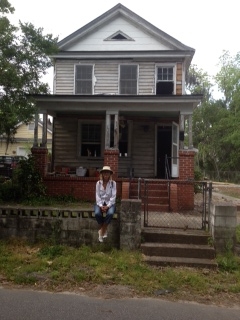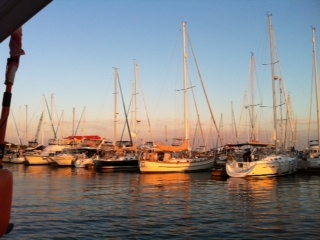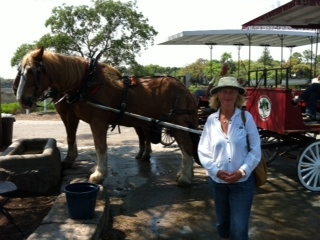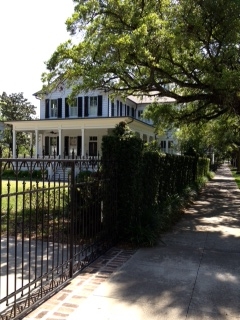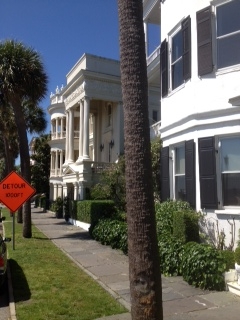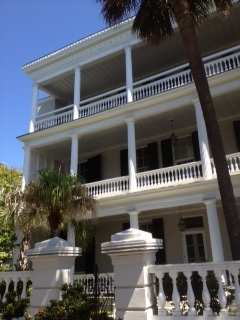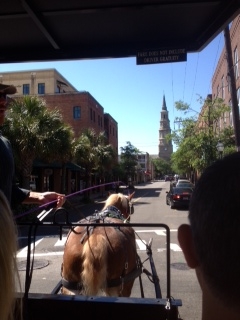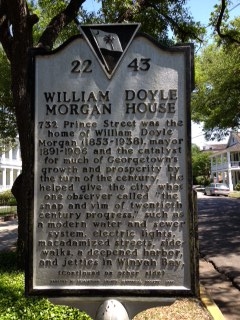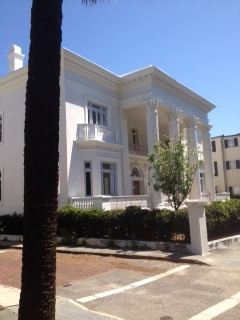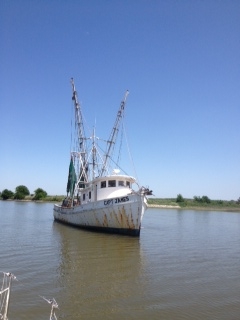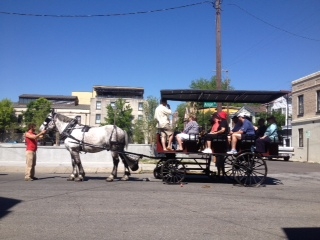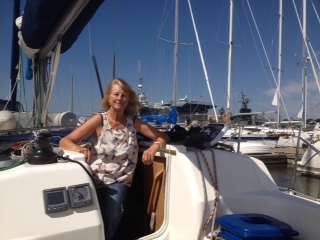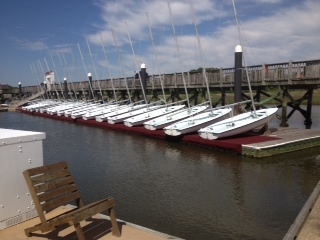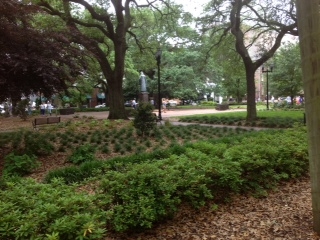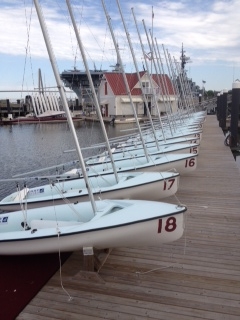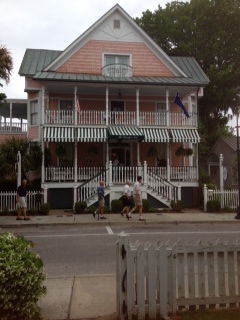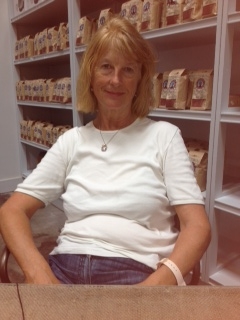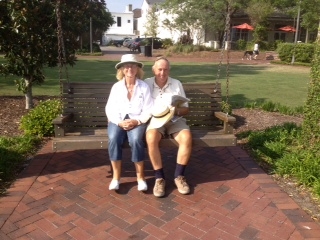The Low Country and South Carolina

The Low Country and South Carolina. Tuesday 6th May 2014 Georgetown 33:21.878 N 79:15.990 W Distance sailed 303 miles. Many advised us not to take Shelduck, drawing nearly 6 foot, through Georgia ICW because though beautiful it is poorly maintained. I had written a report on the renewal of Savannah for an architectural magazine in the 80's and wanted to visit it and we had also planned to meet up with the Jensens at their home port of Isle of Hope Georgia near Savannah. The storm which I had been watching develop for a few days on IGRIB looked menacing but with a window until April 29th we decided to sail for Beaufort, South Carolina for fear of being trapped in Georgia. Many rivers deposit sand at their entrances and they do so here. Channels are dredged through these banks and it is often a 10/20 mile passage to get to the river's mouth. In and out to see the Jensens would be a 25 mile up river passage plus the chance of being delayed by the storm making it difficult to get to Norfolk Virginia on time without taking risks. Saturday 26th Shelduck left the San Sebastian River St Augustine at 10.00 so that she would arrive at the channel to the Beaufort River at low tide at 13.30. It is almost impossible for Shelduck to go up or down these river entrances against the tide. We motored with light wind on the nose followed at sundown by no wind and a dark moonless night. Sunday 27th arrived at the entrance at the appointed time for the 20 mile passage upriver swept along by the tide. Arrived at Downtown Beaufort at 17.00. With the storm getting closer I decided to take a marina berth because of the strong current near the town. Shelduck was now in an area of 7/8 foot tides rather than the minimal tides she had got used to. We are now in The Low Country which straddles the coastal wetlands of Georgia and South Carolina and includes the beautiful cities of Savannah Georgia and Beaufort and Charlestown South Carolina. Monday 28th enjoyed a horse drawn tour of Beaufort with its streets in a grid pattern and founded by the Duke of the same name in 1711. The town was saved from destruction in the Civil War because of the Great Skidaddle. As the Yankee Navy came up river to blockade the area the white natives left their homes which were then used by Northern forces as headquarters for the duration of the war. At war's end the houses were given by the Government to African Americans few of whom are living in these dwellings today. In the mid-20th century developers began to eye the old historic structures for demolition making way for new. The preservation movement began as The Committee to save the Lafayette Building and the Historic Beaufort Foundation was incorporated in 1965. Now nearly 50 years later in addition to scores of structures being saved through its advocacy role numerous 19th century buildings have been restored through its hands on preservation. I had to see Savannah which was founded in 1733 so on Tuesday 29th, with the storm one day away, we hired a car and Anne drove the 80 mile round trip. The Iphone maps took us straight to the historic part of the city and we again enjoyed another tour this time in an open trolley bus to which actors joined at two points to help explain the history. The streets are again in grid form with 22 of the original 24 landscaped squares surviving laid out like a draughts board. The renewal of the city was started in the mid-50's by a group of women who formed a Historic Foundation when a number of historic buildings had been demolished and more demolitions were proposed. Since then more than 1000 architecturally or historically significant structures have been restored and are in use. Wednesday 30th the storm arrived. Anne and I had rarely seen such heavy rain accompanied by such strong wind. As it travelled from the Gulf to the Atlantic it had taken the lives of 37 people mostly by tornado in Alabama and flooding in Florida. Next stop for sightseeing was to be Charlestown which was 75 miles away on the ICW so I decided to make it a 2 day passage with an overnight in Bowhicket Creek. Shelduck went through Ladies Island Swing Bridge at 09.00 on May Day. It is closed from 07.00 to 09.00. Interesting and challenging passage on Beaufort River, Coosaw River, South Edisto River, Dawho River and North Edisto River. As Shelduck turned into the last named I was following a yacht ahead but had a shout from the chart table, where the mate was keeping an eye on me, to say Bowhicket Creek was behind to starboard not to port so I did a 180. No tide tables are published for this area because of the way these rivers interact with one another and the effects of tide and the run off of water from the land. Next day the 2nd Shelduck traversed the Wadnalaw and the Stono rivers which washed us into Charlestown sometimes at nearly 8 knots in a cut. All the fixed bridges over the ICW have 64 feet clearance except one at the entry to Charlestown from the South which has 10 feet less. It is also the only one we met which does not have the height marked at water level. Shelduck went under very slowly at low tide. I decided to head for Charlestown Harbour marina which is across from the historic city on Cooper River in the hope of being near a place to get propane and provisions. The marina also had a free trolley bus to the centre. We were pleased to hear that Walmart was near the nearest propane gas supplier so as to reduce taxi cost. Went first to gas fill which took 5 minutes then to Walmart and left taxi which cost 30 dollars. Taxi back from Walmart 20 dollars. Gas refill cost 5 dollars. I estimate the cost of getting 5 dollars worth of gas in most American towns would be a 45 dollar taxi ride. Recent town planning and the lack of public transport is terrible. A decision of Eisenhower to build so many highways and no public transport in the 50's. Anne believes that the lack of public transport means that the USA is not a first world country. Sunday 4th - took the trolley to the centre and enjoyed another horse drawn tour. Charlestown was founded by the English in 1670. English ideas soon blended with French Huguenots fleeing religious persecution. Many came by way of Barbados and added a Caribbean flair. There is also a Spanish influence and slaves had a huge influence from food to the arts and language. The trolley dropped us near the City Market which has been the commercial and social centre since the early 1700's. Anne and I took many pictures of the architecture in the French Quarter and at the Battery overlooking the harbour. Our marina was at Patriot's Point where the aircraft carrier USS Yorktown, a destroyer and submarine were berthed. and available to tour. That evening Anne and I dined out at Fish House nearby where we had an exceptional meal. We often heard the American Dream mentioned on radio and asked our young waiter what it was. He said it used to be making a fast buck without having to work for it but now it is having a nice lady to come home to, a roof over your head and a full belly. Shelduck left the marina and The Low Country on the 5th just in time to pass through the Ben Sawer Bridge at 09.00 with 2 other yachts. We had read complaints in the local press of shoaling and lack of maintenance in this part of the ICW and sure enough Shelduck touched bottom twice. It's a chicken and egg situation, funding depends on commercial traffic which does not come because of shoaling. We anchored for the night in Five Fathom Creek, a beautiful place full of wildlife in the water, on the land and in the air. As we entered the creek a barge was aground just ahead in the ICW itself. I hoped it would be gone in the morning, which it was. The passage from Five Fathom Creek to Georgetown was much easier with plenty of water. Shelduck took a berth at Georgetown Landing. Georgetown is South Carolina's third oldest city founded in 1732. Rice and Indigo plantations were established. By 1840 the area produced half of the rice consumed in the USA. Today there is an influx of early retirees from the North, people who are tired of shovelling snow. The beauty of the town is largely due to W.D. Morgan, a New Yorker whose family moved to Georgetown before the Civil War. Among his many accomplishments as mayor was the planting of evergreen oaks along the city streets. 732 Prince street was the home of William Doyle Morgan (1853-1938) mayor 1891-1906 and catalyst for much of Georgetown's growth and prosperity by the turn of the century. He helped give the city what one observer called " the snap and vim of 20th century progress" such as a modern water and sewer system, electric lights, macadamized streets, side-walks, a deepened harbour and jetties at Winyeh Bay. When he retired in 1906 citizens presented him with a sterling silver punch bowl in recognition for his "Zeal and Energy and Untiring Efforts for the improvement of the City and Her Harbor" .He founded and was president of the Bank of Georgetown 1891-1927. Morgan a devout Catholic was also instrumental in the construction of St. Mary's Catholic Church built in 1899-1901 and consecrated in 1902. Being a catholic with Doyle in his name I presume his mother was a Doyle like mine. Three of the stained glass windows in the church are dedicated to a Doyle. There are many Doyle family plots in the cemetery. I had never been south of Washington DC before, Anne the much travelled one, of course had. We both found the people of Georgia and South Carolina gentle, kind, welcoming, relaxed and not hurried. They are hard-working and look after the things of this world. Cities, towns and the countryside are very well maintained. They admit to keeping guns and religion close to them and everyone seems to have a pet dog, mostly large. If they are uneasy at all about anything it is living in an increasingly Yankee country and the uncertain state they think the USA is in. African Americans are noticeable by their absence from this coastline. |
